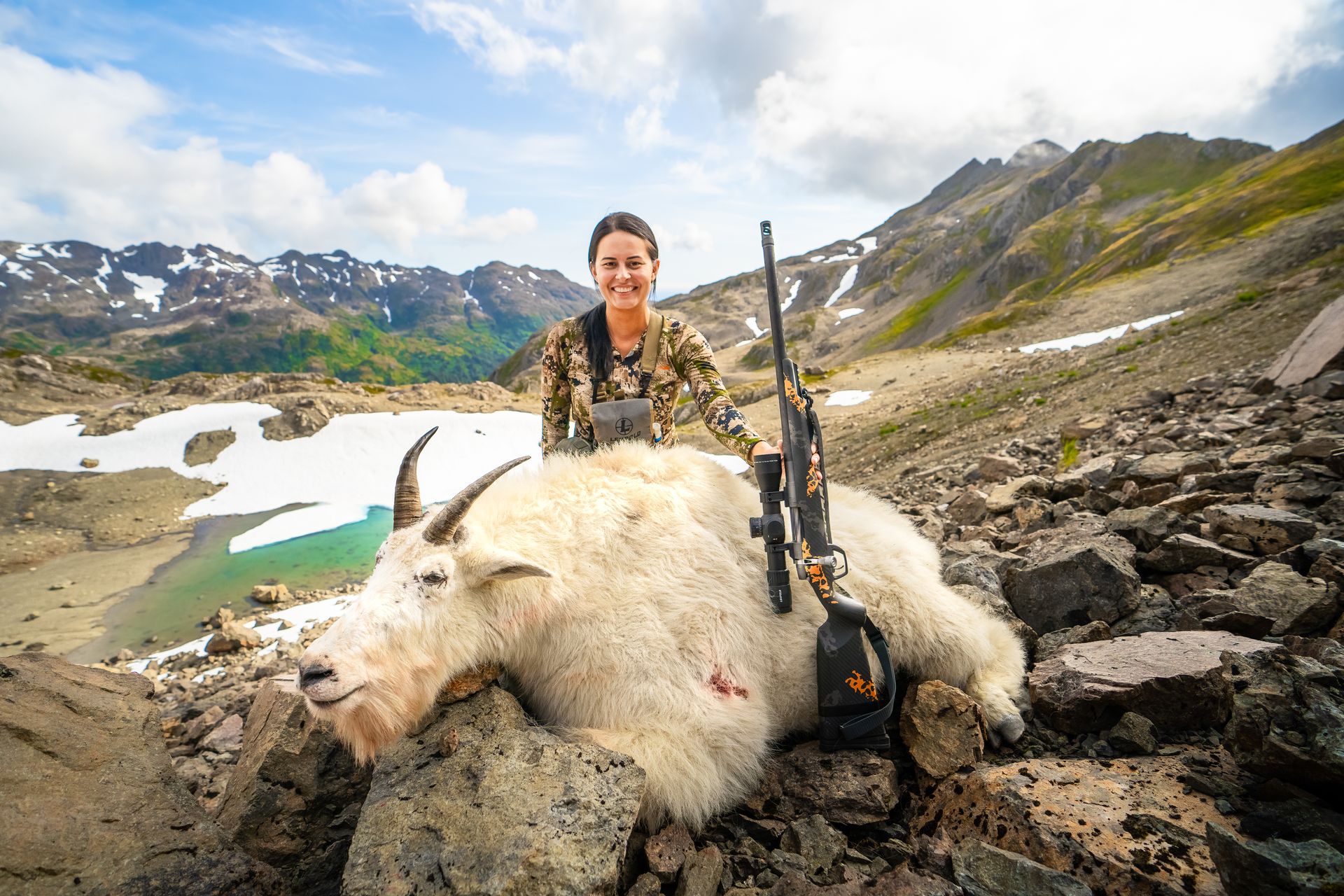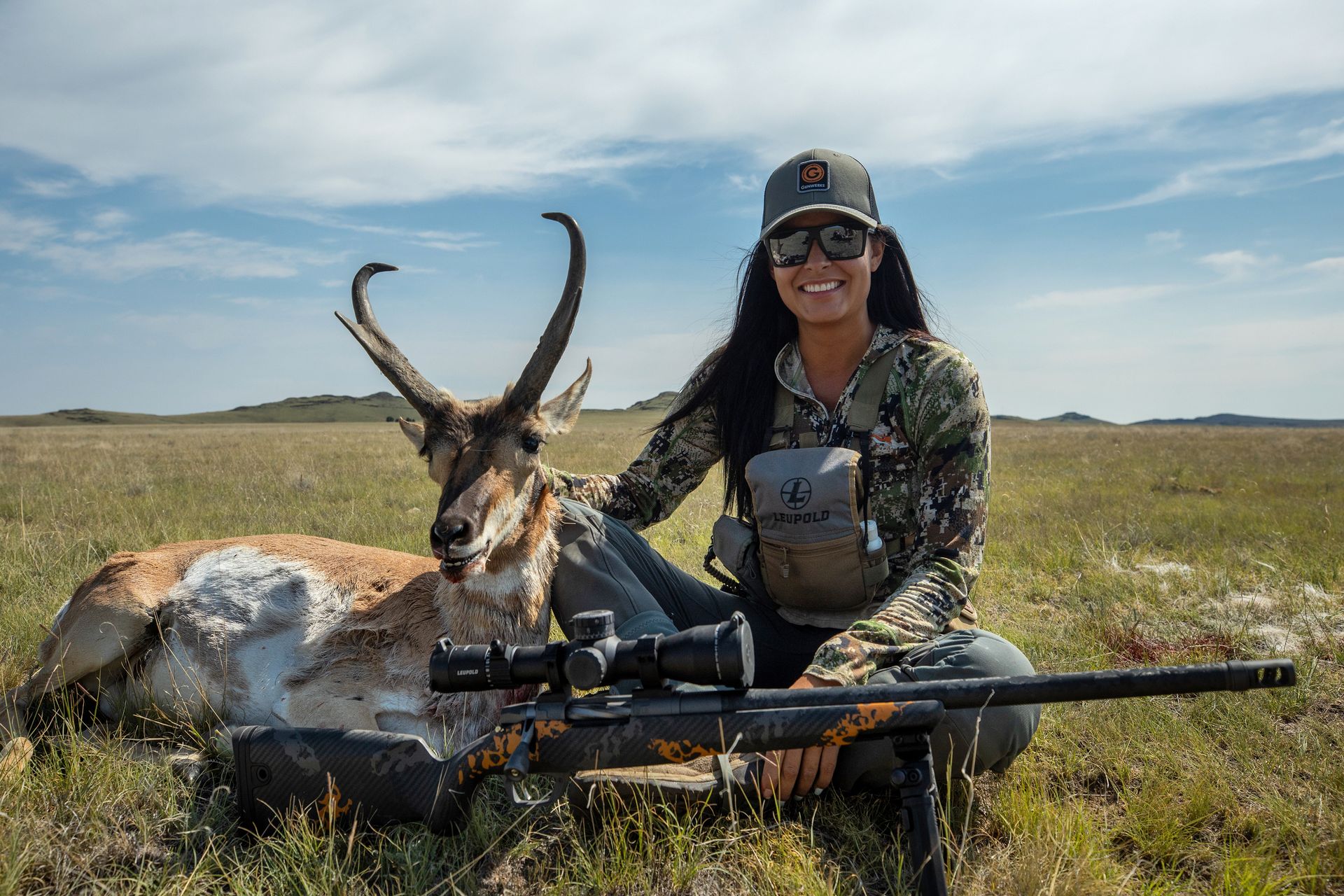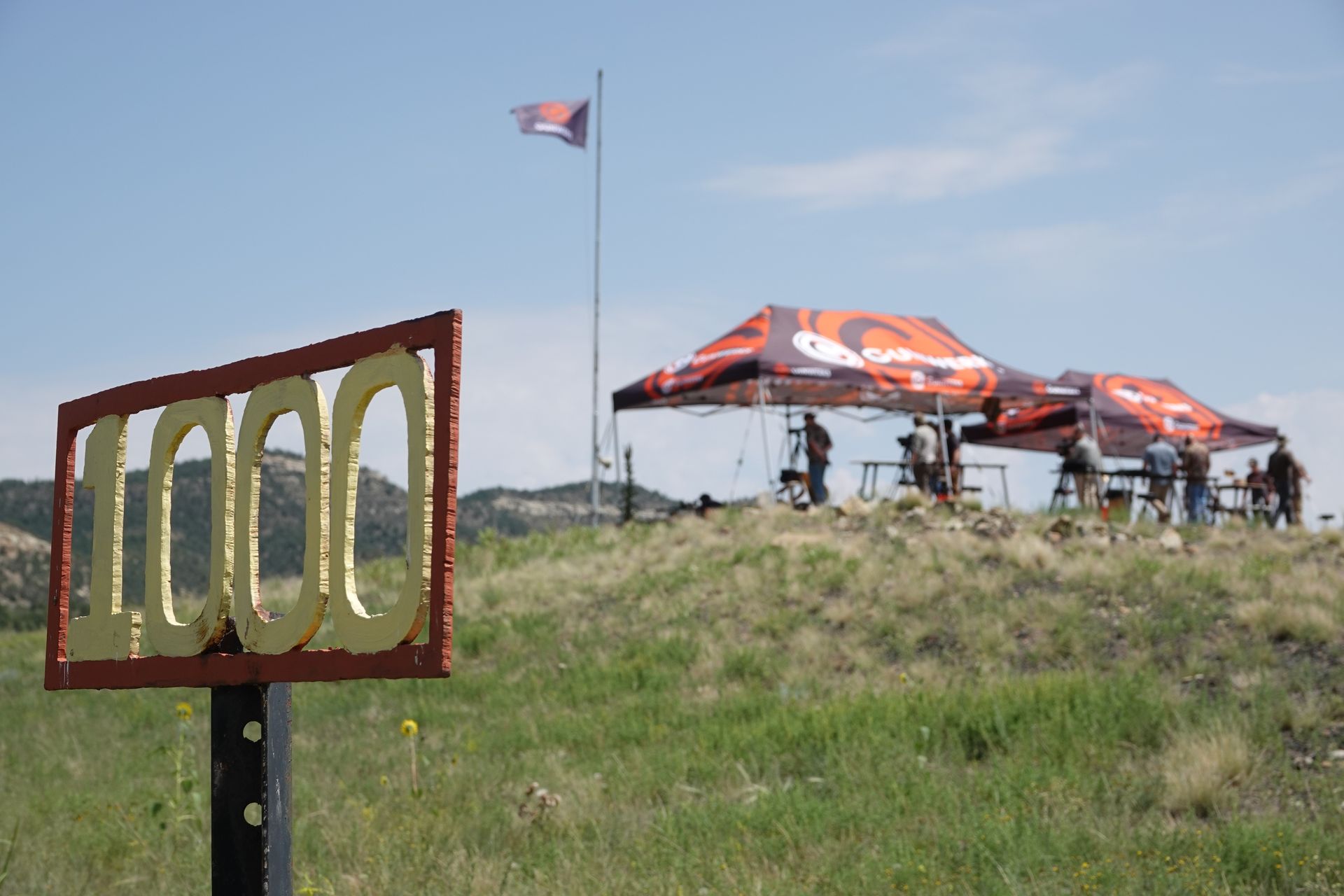THE PROBLEM:
We’ve all been there. We’ve missed - completely missed. Some misses are easy enough to shake off while others that involve a lost chance at a bull-of-a-lifetime or a bad hit on a game animal can haunt us for years. Idle times in the field can bring back memories of that elk, that sheep, that game animal of significance that you worked so hard for only to come home empty handed and desperate to find some legitimate reason for missing.
Much like other stages of acceptance, there are various levels of reasoning to work through. Start with denial: “It wasn't my fault, surely it was the equipment.”, “My scope must have gotten bumped in the field.”, “I had a flyer in my group once or twice and I bet this shot was like one of those so it’s obviously the ammo.”, “The ballistic program must have given me bad dope.” The list goes on. Eventually you may move on from denial to some anger or depression, depending on the amount of time, physical effort or money that went into the hunt. Sometimes legitimate reasons can be found in the equipment. A loose scope mount, for example. More often than not, salt on the wound comes in the form of the rifle, optic, ammo, and ballistic equipment working perfectly when checked at the range. Finally we may find acceptance. We missed. Now what?
Hunting equipment, from rifles to optics to electronic accessories has come a long way in recent years. Most of us have taken advantage of the benefits found in new technology and manufacturing and have very good shooting systems. We can research from the comfort of our homes or offices to find the best equipment money can buy. Improving our shooting ability and fully preparing for various positions, distances and angles requires getting out. Not just getting outside, but getting out of our comfort zone.
THE SOLUTION:
Unless you’re upgrading from a slingshot to a modern rifle, formal shooting instruction can have more of a positive effect on your future hunts than any amount of new equipment can. If you’re willing to learn something new and possibly “un-learn” some bad habits you’ll increase your shooting ability. By training, you will not only be better equipped to squeeze the trigger but also enhance your ability to best use your support equipment. You will also increase awareness of your shooting environment and implement the best methods for getting ballistic data quickly while in the field.
Not long after Gunwerks started selling rifle systems the need became clear: shooting instruction is essential.
Enter Long Range University
“Taking a course can change the paradigm of what you believe you can do and what you believe your equipment can do.” - Aaron Davidson, Gunwerks President & CEO
Gunwerks has set up a series of courses from Level 1 to Level 3. The Level 1 will take students from equipment selection to maintenance to external ballistics while bench shooting. It also teaches how to calculate and validate trajectories.
Once those steps are achieved, a Level 2 course focuses more on how to read the wind and compensate for it. Time will also be spent in field position and advanced corrections to be made related to air density and elevation.
Level 3 courses focus even more on field work and less on the classroom. Students shoot in challenging real-world settings where additional factors are presented like vertical wind and long-distance high angle shooting.
“A structured training curriculum and building foundational knowledge that you can add additional blocks of knowledge and skills on top of will serve you well.” adds Aaron Davidson. “ It will move you up the learning curve and put you in a position where, when you go shooting, you have fun. You’re actually learning and developing and moving forward rather than dealing with frustrating things like the gun's performance or maintenance issues or inconsistencies due to your shooting platform.”
Long Range University is headquartered near Cody Wyoming with off-site options also available around the country. Nearly every week between June and October offers some type of learning opportunity. Many students take advantage of all the sites and tourist attractions near Cody before, during and after their class. Yellowstone National Park, the Buffalo Bill Center of the West which includes the best collection of firearms in the U.S., area mountain ranges, fishing, and the nightly Cody Night Rodeo, just to name a few.
Local LRU classes are held at the Gunwerks private shooting facility that features a 4,500 square foot training building that sits on a 250 acre developed range with steel targets integrated into the natural land contours. The classroom is air conditioned and only a dozen feet from covered indoor shooting stations. Each shooting station is fully kitted out with shooting, cleaning, and observation equipment.
Further breakdown of the Level 1 (Foundation), 2 (Development) and 3 (Application) courses come with the following descriptions:
Foundation Course
In our 2-day Foundation Course, we focus on building your skills and knowledge base. You will learn about the long range shooting system, the components, and the setup needed to be successful at long range. If you are a novice shooter you will learn the basic foundations from which to build on. If you are an experienced shooter we guarantee you will pick up valuable knowledge and techniques to improve your capability. You will learn how to utilize a ballistic program, how to “true” the program to your live fire results, and the basics of compensating for wind. In addition we provide an overview of the Gunwerks and Revic product lines to help you select the products which best suit your needs and hunting style.
Development Course
In the spirit of progression, our 2-day Development Course builds on the Foundation you learned. You will learn the more technical aspects of long range shooting such as spin drift, temperature, altitude, and coriolis effect. You will learn the science behind the ballistics, how to range effectively and accurately, and how to read wind. You will learn the science behind a “cold bore shot”, which for a hunter is really the only shot that matters. You will learn how to build stable long range shooting positions in the field, utilizing your hunting gear and what nature provides. A large part of being an effective hunter is learning to perform under stress and pressure in the moment of truth. We will introduce you to stress inoculation drills to help you prepare for those moments when all your dreams, the money you have spent, the time preparing, and the once in a lifetime tag all come down to one moment and one perfect shot.
Application Course
This 2-day course is designed for mountain hunters. Mountainous terrain is unique in that shots are often taken at an angle, and the mountainous terrain makes wind very tricky. This is an “owners” class, meaning we encourage you to bring your own rifle and ammunition. Rental rifles are always available if you prefer. You will learn how to calculate for inclination, read wind in an environment where there is rarely mirage, build shooting positions, and put it all together in scenario-based field situations. We believe in using technology, however we also realize that batteries die and cold fingers and gloves are not compatible with touch screens. We don’t want one dead battery to ruin a hunt, so we believe you should always have backup techniques at the ready to function without a wind meter, a ballistic program, or a laser rangefinder. In this class we teach you these back-up techniques.
Sheep Mountain
Expounding on the Level 3 Application course idea, Gunwerks recently added the pristine Sheep Mountain training venue outside of Cody, Wyoming overlooking the scenic Buffalo Bill Reservoir. The goal of this course is to prepare hunters in real-world scenarios for mountain hunting. This location provides opportunities to truly test one’s abilities with extended range, high-angle shots with mountain wind conditions. Where better to train for that sheep, mountain goat, ibex or other high mountain game than in the type of terrain in which they live and with the distances, angles and winds you’ll likely have to contend with. While there are plenty of flat spots to work with their equipment, the opportunity to also shoot from various outcroppings, rocks and tricky angles provide students to prepare more for their mountain hunts than any normal shooting range.
Off-Site Training
In addition to on-site LRU shooting classes, various remote courses are offered each year in locales that offer a different environment or the convenience of a location closer to home for some students. These include venues like the Two Hats Ranch in Michigan, Cameo Shooting Complex in Colorado, Highland Hills Ranch in Oregon, Ensign Ranch in Utah and more. Be sure to check out the Gunwerks website for more opportunities as they are added to the overall schedule.

Each class is different and most condense Level 1 and 2 in a customized format. Below is an example of the 3 day training at the Two Hats Ranch class.
Day 1
Long Range Equipment
Shooting fundamentals
100 yard zero and shooting fundamentals
800 yard data confirmation
Ballistic App
Day 2
Long Range External Ballistics
Long Range Wind
Cleaning demonstration
Shooting drills 300 - 1000 yards
Day 3
Internal and Terminal Ballistics
Laser Range finder
Field Shooting Positions
Long Range Cold Bore shot
Unknown distance range drills
Field Shooting Position drills
Whether the class is in Cody, Wyoming or one of the other beautiful off-site venues, the instruction is first rate and the information taught is constantly being reviewed and updated to incorporate the latest in equipment and ballistics software.
Train and Hunt
Throughout the year there are multiple opportunities for hunters to attend one-of-a-kind events that combine training and hunting. A longstanding yearly favorite is held in August near Raton, NM and combines 2 days of shooting instruction at the NRA Whittington Center with 2 days of guided pronghorn hunting nearby for real world application of the skills learned in training. Other events are held throughout the year that combine training and hunting in localles like Texas for aoudad, elk and other game and also South Africa for a variety of plains game. Each event is different and some include a 1-day “refresher” course before the hunt while others have multiple day condensed courses.
Beyond specifically offering shooting instruction, Gunwerks has offered reloading classes that presented students with the knowledge and tools to hand load precision ammunition to go hand-in-hand with shooting drills. More specially classes like this and other topics, like muzzleloaders are in the works. Be sure to check out the Gunwerks website as training classes and hunts are added throughout the year.


https://hscfdn.org/resources/publications/

Preparing for the Shot of a Lifetime